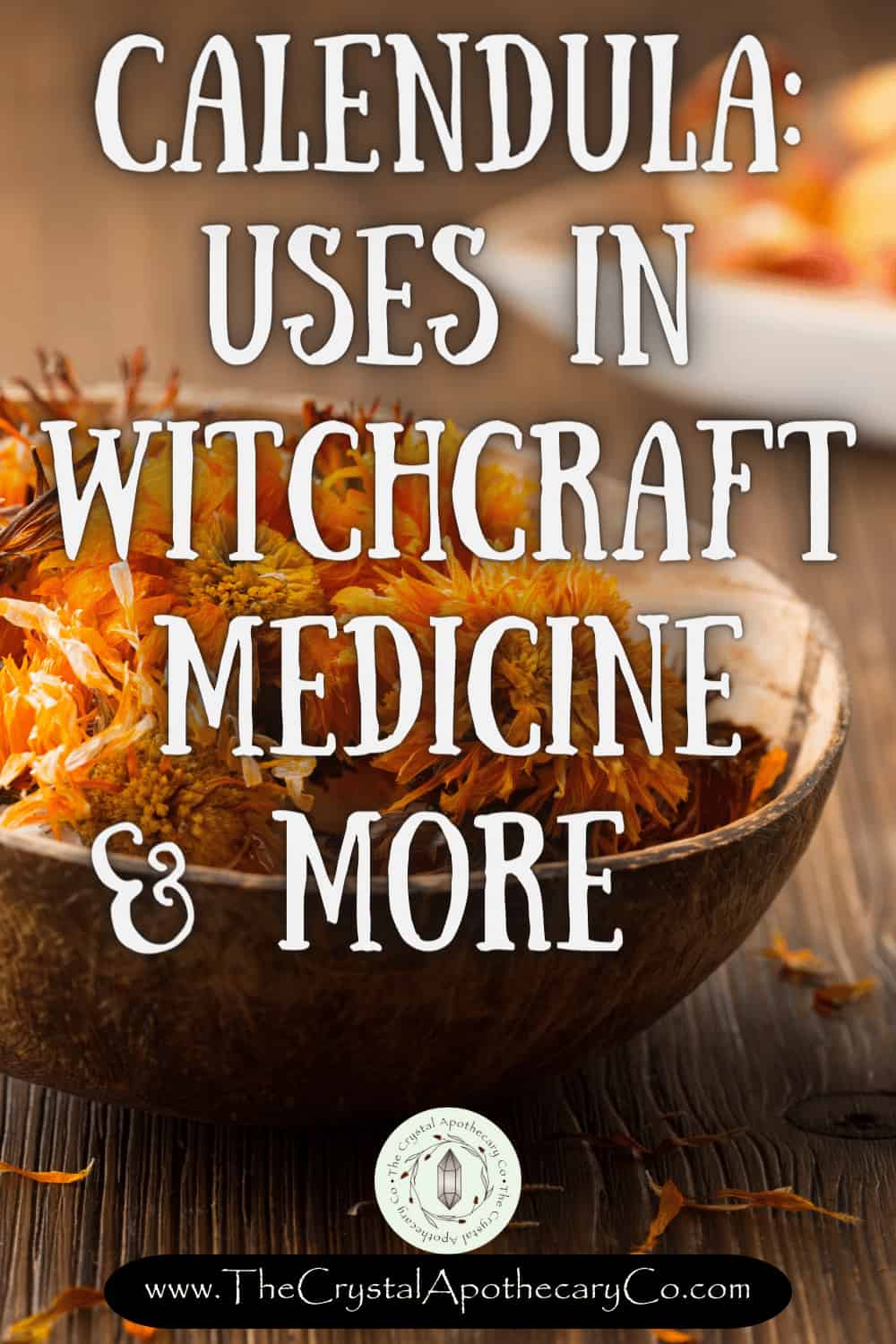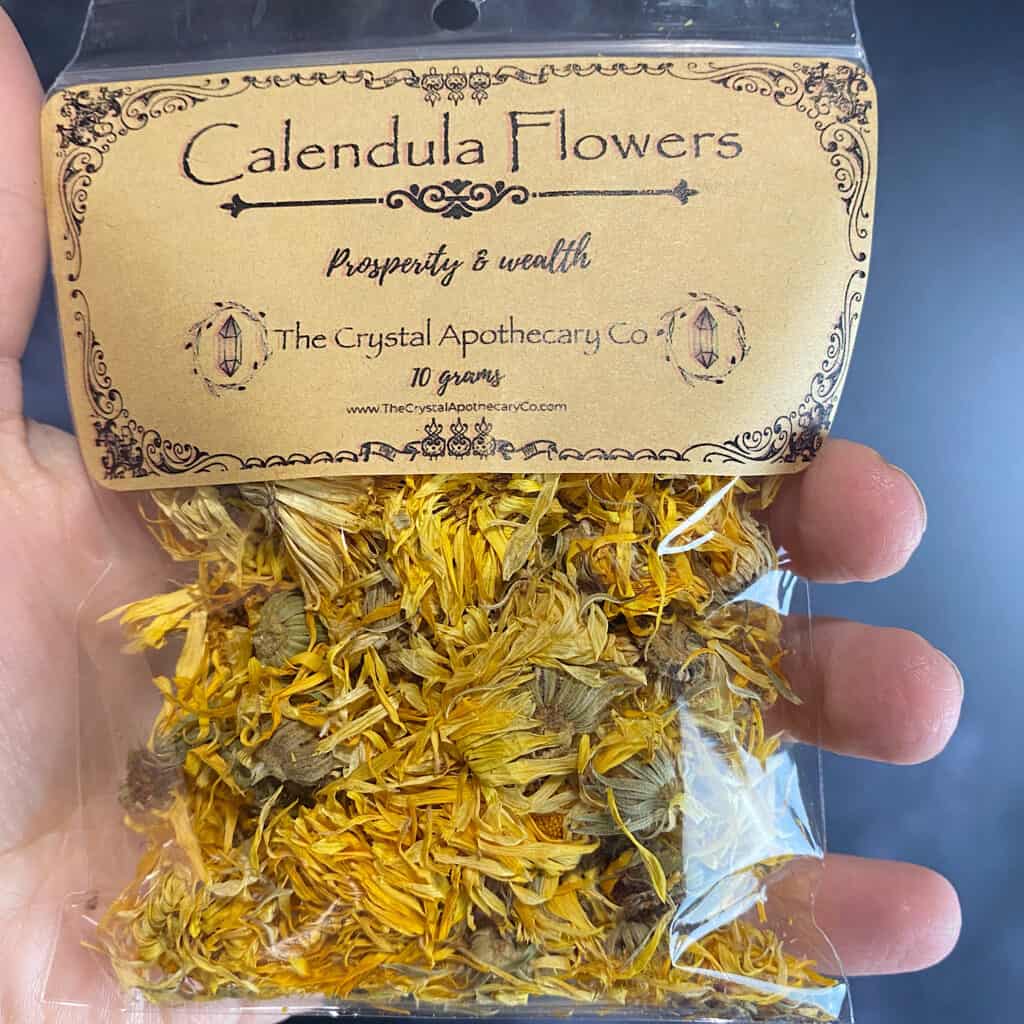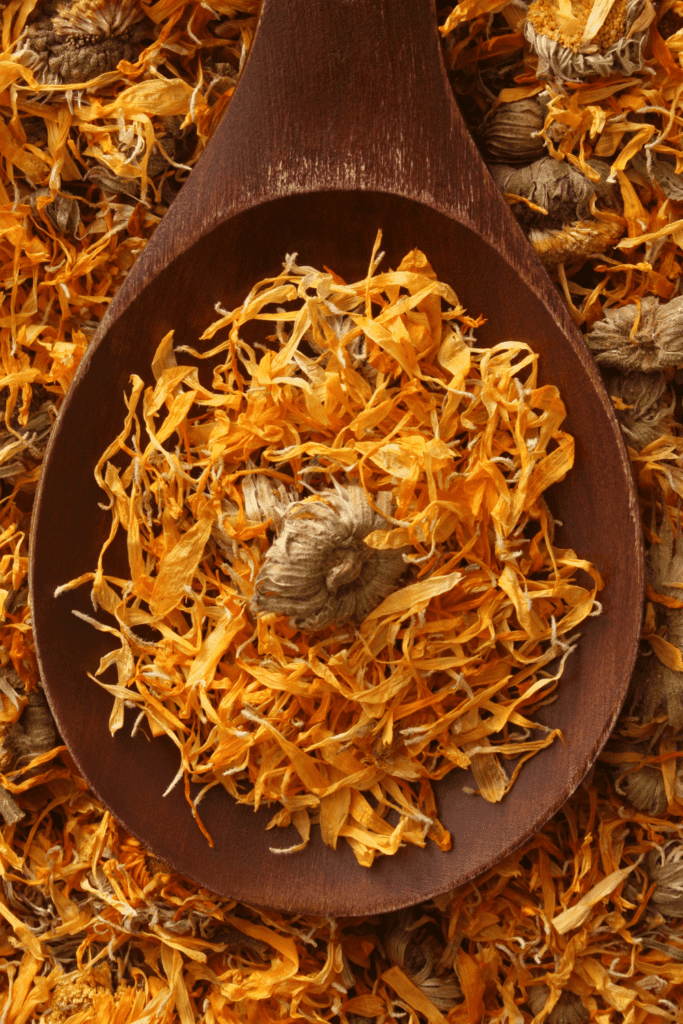Calendula Flower Herbs: What is it?
Calendula Officinalis (calendula flower herbs here) is an annual flowering plant native to Eurasia and North Africa.
Its common names include pot marigold, pot herbs, potpourri, pot scented geranium, and garden phlox.
Calendula flower herbs, commonly known as calendula, is a member of the marigold family.
This herb is used for many purposes including healing wounds, soothing burns, treating eczema, and relieving pain.
Calendula is one of the most popular herbs for skin care because it contains anti-inflammatory properties.
It is also beneficial for those suffering from dermatitis, psoriasis, sunburn, and even acne.
This perennial herb grows up to one meter tall and produces small yellow flowers that bloom throughout summer.
Calendula Flower Herbs: Tea
While the tea is made by steeping the flowers in boiling water for 10 minutes, the extract is derived mainly from the flowers and leaves.
Despite its slightly bitter taste, it is traditionally used in folk medicine due to its ascribed therapeutic properties, such as helping treat wounds, burns, cuts, bruises, and inflammation.
Here are some emerging uses for calendula tea and extracts:
– Calendulae officinalis is used to help reduce swelling, relieve pain, and promote healing.
– Calendula Officinalis is used to treat skin conditions like eczema, psoriasis, and dermatitis.
– Calendulaceae is used to treat fungal infections.
– Calendulas officinalis is used as a natural insecticide.
– Calendularia officinalis is used for treating diarrhea.
– Calendulum officinalis is used in homeopathic remedies.
Calendula Flower Herbs: Medicinal Uses
Calendula flower herbs extract found in essential oils, ointments and tinctures may help heal wounds and ulcers.
A topical application of the tea to the skin may also work. However, it’s unclear how much you’d actually benefit from drinking the tea.
A test-tube study indicates that calendula extract increases the amount of collagen in the body during wound healing.
Collagen helps form new skin. In one study, researchers applied calendula extract to mice with full thickness burns.
They observed that the treated animals had faster wound closure rates compared to untreated controls.
The researchers also noted that calendula extract decreased the levels of inflammatory cytokines in the blood.
These are chemicals produced by cells that cause inflammation. Cytokine production can lead to scarring.
In another study, researchers gave rats a topical application of calendula extract every day for four weeks.
At the end of the treatment period, the researchers examined the rats’ skin.
They observed that the rats given the extract had less scar tissue formation than those given a placebo.
However, there haven’t been any human trials conducted on humans to determine whether calendula extract speeds up wound healing.
A study published in 2008 found that calendula extracts killed tumor cells in test tubes.
This suggests that it could potentially work against tumors in people.
But further research is needed to confirm whether calendula works as well in humans as it does in petri dishes.
In addition, scientists don’t know how much calendula extract you’d need to take to see benefits.
The most well-known compound found in calendula is apigenin, a natural plant pigment that acts as an antioxidant.
Apigenin inhibits the activity of tyrosine kinase enzymes, which play a role in cellular signaling pathways involved in carcinogenesis.
In addition, it blocks the synthesis of DNA and RNA, thereby preventing cancer cell division.
A study published in Cancer Prevention Research showed that apigenin inhibited the growth of prostate cancer cells in vitro.
However, another study suggested that apigenin did not affect the growth of breast cancer cells.
In fact, some studies show that apigenin actually promotes apoptosis in cancer cells.
For example, researchers observed that apigenin induced apoptosis in human colorectal adenocarcinoma HT29 cells.
Another study demonstrated that apigenin caused apoptosis in human lung cancer H460 cells.
Other phytochemicals present in calendula include luteolin, chrysanthenyl acetate, and beta-carotene.
Luteolin inhibits the production of nitric oxide synthase, which plays a key role in promoting tumor growth.
Chrysanthenyl acetate increases the levels of glutathione peroxidase, an enzyme that protects cells from oxidative damage.
Beta-carotene prevents the formation of reactive oxygen species and reduces the risk of developing cancer.
Several clinical trials have been conducted to investigate whether calendula extracts could treat cancer patients.
One trial tested the effectiveness of a topical cream containing calendula extracts in treating basal cell carcinomas.
The results indicated that the cream had no effect on the size of tumors.
I’ve been making bone broth since I was a child. My mother used to make it every week and we’d drink it like tea.
As I grew older, my interest in nutrition took over and I began researching how to make bone broth myself.
My favorite recipe is one I found on Pinterest called “Medieval Herb Broth.”
It uses herbs such as calendula, astragalus, and turmeric, along with chicken feet and marrowbones.
The recipe calls for simmering the broth for 24 hours, but I find that it takes about 12 hours to concentrate enough flavor.
I prefer to use organic beef bones because they are free of hormones and antibiotics.
After straining and cooling, the broth is frozen into small portions and then added to soups, stews, sauces, and
chilis all throughout the winter months, adding a boost of minerals and vitamins while keeping you healthy.
Calendula Flower Herbs: Cosmetic Uses
Calendula flower herbs extract is widely used in cosmetic products, including creams and lotions.
In both test tube and human studies, it has been shown to increase skin hydration and stimulate skin firmness and elasticity.
This effect appears to be related to its antioxidant properties, which may reduce skin damages caused by oxidative stress.
The ability of calendula extract to protect against UV light exposure is supported by one test-tube study showing that it has a SPF value of 8.36.
Sunscreens containing calendula oil could therefore help prevent sunburn.
Here are seven ways calendul oil may be used for skin care purposes:
1. Treat acne scars
2. Reduce the appearance of stretch marks
3. Improve dry and damaged skin
4. Promote healing
5. Prevent scarring
6. Protect against UV damage
7. Help reduce wrinkles
Acne is one of the most common skin problems.
Calendula flower herbs oil may help reduce inflammation and promote healing.
A few clinical trials suggest that calendula oil may be effective in reducing mild to moderate acne lesions.
However, there are no data supporting the effectiveness of calendula oil in severe acne.
A recent review suggests that calendula oil could be used for topical treatments of acne vulgaris.
There are several types of calendula oils available.
They vary in color, scent, and concentration of active ingredients.
Most contain 0.5%–1.0% essential oil.
Some people swear by calendula flower herbs oil for treating eczema.
Anecdotal evidence suggests that applying it directly to the skin helps ease itching, redness and inflammation.
Calendula oil is derived from the petals of the marigold plant, which grows well in warm climates.
Calendula Flower Herbs: Witchcraft
Marigolds are known for being magical. In ancient times, they were used to ward off evil spirits.
Today, they still represent love and friendship.
A wreath of marigolds hung over a door is said to keep evil and negative energy out.
If you want to attract love, place a few dried flowers around your home.
You can even use them in your dream pillow.
Calendula Flower herbs are known for being magical flowers.
Here are some interesting facts about them:
• Calendula Flower herbs are associated with the sun.
• Calendula flower herbs symbolize Love and Constancy and is great for weddings and decorating.
• It is the traditional ‘He Loves Me, He Loves Me Not’ Flower and is useful for Love Potions.
• Wreaths of marjoram hung over a door are thought to keep evil and negativity out.
• Dried Petals can be used to consecrate areas or burn in Consecration Incense.
• They are also a good addition to Dream Pillows.
Named after the ancient Roman goddess of healing,
Calendula Flowers were once used by witches to strengthen their hearts and to raise their spirits.
They’re known for offering a sunny side up view of things and helping them to rise above challenges.
Uses: Calendulas can be used in a ritual bath to bring good luck and attract attention.
They can also be carried in a spell sack to attract good fortune for job applications, court cases, and romantic relationships.
Calendula has long been considered a magical plant as well as a medicinal and culinary one in medieval times.
It has been used to dye fabrics, add flavors to foods, heal wounds, and even help celebrate the sun god’s birth at the winter solstices.
Wreaths made from marigolds hung over doors are believed to keep evil and negativity outside.
Consecrate an space by scattering dry flowers or setting up consecration incense.
These are additionally a great addition for dream pillows.
Utilized in house protection when mixed with pee and put at the 4 edges of your own residence.
In hoodoo, utilized for winning court cases.
Calendula magic teaches us how to find and create the right environment for abundance, possibility, attitude, beauty, and happiness to flourish.
Calendula blossoms throughout the year, so we can learn from her about preserving our financial health during any season.
We can also expect to see many beautiful ways money can grow in our lives if Calendula has joined our circle.
Be ready to make the necessary changes to keep the right environment around us for these blessings to continue to grow.
Calendula magic helps us maintain our financial health.
Calendula Flower Herbs: Calendula How to Grow
Calendula flower herbs do thrive in full sun but will not tolerate excessive heat.
Calendula grows quickly from seed and will reseed in if left alone.
You should be collecting the calendula seeds in the autumn and and then you can replant them in the following spring in colder areas.
Once any threat of frost is over, sow them in the garden and just cover them with only a thin layer of soil.
Once the calendula begins to grow, you should thing them out to a distance of about 12 inches.
Calendula very much prefers to be planted in a nutritious bed of compost.
It also prefers to be mulched around its roots as it starts getting going in the summer.
Calendula Flower Herbs are tolerant of poor soil, but using compost will help it thrive!
Calendula Flower Herbs can also do great in pots and window planters.
Some people like to have them potted indoors but they are very strongly scented so if you are sensitive to strong scents,
you may want to keep them just outside to weaken its strong beautiful scent a bit.
How to stay in touch!
Check out our website for more such information and shop from the best collection of crystals.
Follow us on Facebook, Instagram, Tik Tok, and Twitter!
If you are looking for a reputable seller of all things metaphysical, check out www.TheCrystalApothecaryCo.com!
Be sure to stay up-to-date on all our Witchy Content, Podcasts, Informative Videos, & Free Give Away Contests by FOLLOWING OUR NEWSLETTER HERE!










